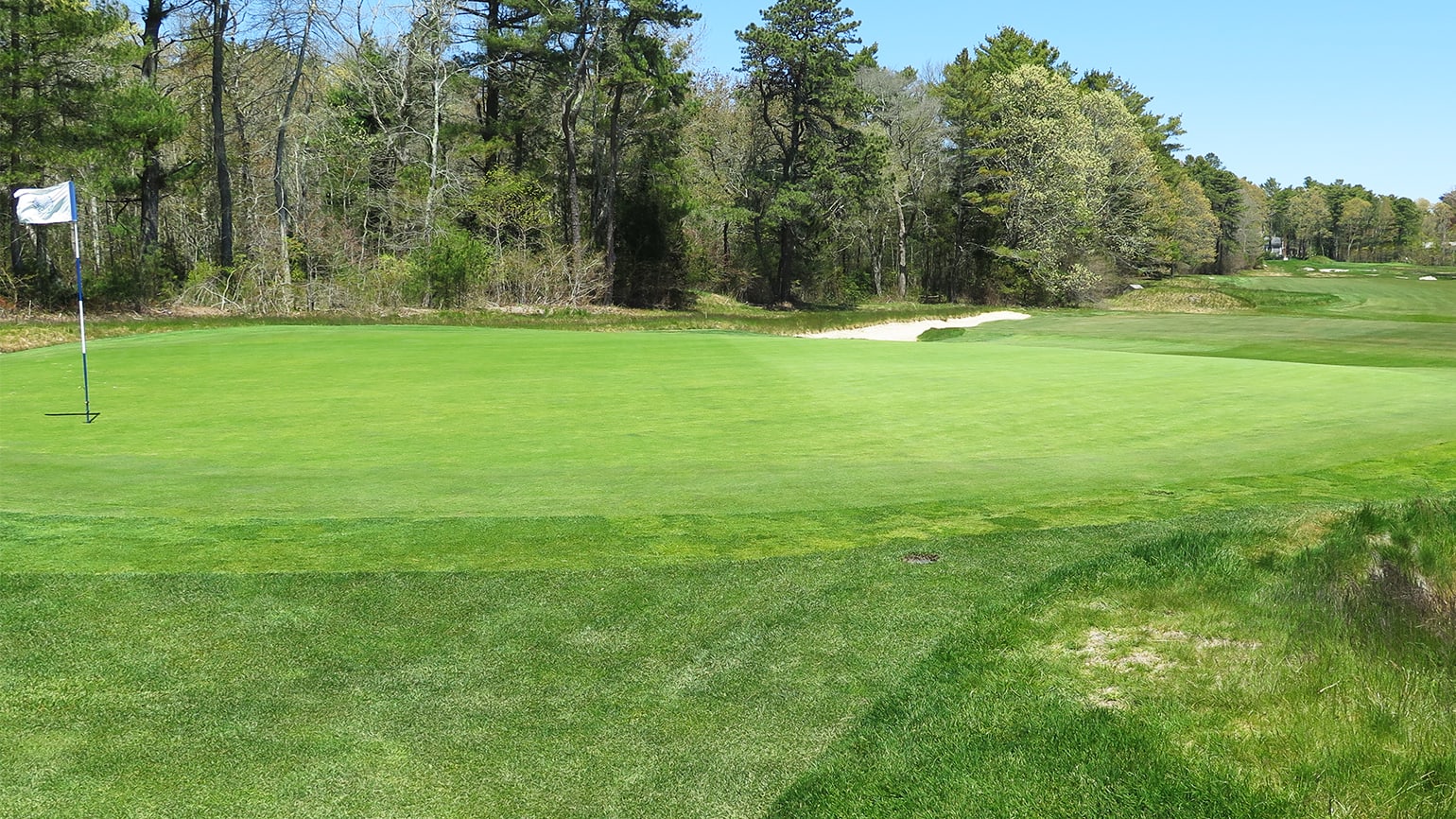USGA – Northeast Update – Triplex Tips for Success
Most courses are operating with fewer staff members than they normally would at this time of year thanks to the COVID-19 virus. As a result, superintendents are doing all they can to optimize efficiency. One change that has been made at many courses is switching from walk mowing to triplexing putting greens. This change significantly reduces the amount of labor hours required to mow greens.
While triplexing is clearly more efficient than walk mowing, there are a few reasons why some superintendents do not like the idea. The concerns about triplexing greens include excessive wear – i.e., triplex ring – around the perimeter of the green, poor quality of cut, or damage from mower operators turning too sharply in tight areas between greens and bunkers. While these can be concerns, there are several ways to avoid these issues:
- Triplex ring can be avoided by reducing mowing frequency of the cleanup pass to two or three times per week. An even better option is having one walk mower mow two or three passes around the perimeter of the greens two or three times per week instead of using the triplex for the cleanup passes. Furthermore, if a triplex ring is highly noticeable, it is likely a sign that organic matter content is elevated.
- Damage from tight turns between bunkers and greens can be avoided by altering mowing patterns. On a recent USGA Course Consulting Service visit, superintendent John Kelly at the Kittansett Club in Marion, Massachusetts, explained that he triplexes his greens in a 50/50 pattern to eliminate tight turns. Superintendent Dan Powell from the Piping Rock Club in Locust Valley, New York, triplexes the greens with passes in one direction only. At the end of each pass, the operator lifts the reels and reverses back to the front of the green to start the next mowing pass.
- The belief that walk mowing delivers a superior quality of cut to triplex mowing seems to be losing steam. This may have been true 20 years ago, but today’s triplex mowers provide a great quality of cut. In fact, many superintendents, even at some of the most highly regarded courses in the country, are using triplex mowers to provide great putting surfaces and are reallocating labor hours that used to be spent walk mowing to other areas of the golf course. Courses that have switched have also noticed improved turf health on collars and approaches without the traffic that comes from walk mowing.
If you have contemplated purchasing triplex mowers to improve operational efficiency, contact your regional USGA agronomist. The Green Section has created a model that calculates the payback period and long-term savings associated with triplex mowing instead of walk mowing. Oftentimes, understanding this calculation can change the conversation from “can we afford to” to “how can we afford not to.”
This article was originally written by Paul Jacobs from USGA here.
Northeast Region Agronomists:
Adam Moeller, director, Green Section Education – amoeller@usga.org
Darin Bevard, director, Championship Agronomy – dbevard@usga.org
Elliott Dowling, agronomist – edowling@usga.org
Paul Jacobs, agronomist – pjacobs@usga.org
Information on the USGA’s Course Consulting Service
Contact the Green Section Staff
